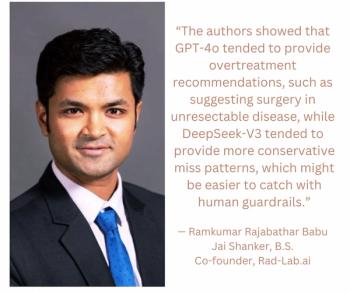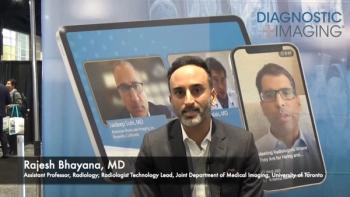
AI as a Second Chest X-ray Reader Better Informs Chest CT Recommendations for Lung Cancer
Both board-certified radiologists and radiology residents more appropriately suggested chest CT follow-up when using artificial intelligence with chest X-ray.
Incorporating artificial intelligence (AI) as a second reader with chest X-ray can improve both radiology resident and board-certified radiologist performance in recommending chest CT exams for patients suspected of having lung cancer.
In a study published in
“The use of AI could help to detect pulmonary nodules accurately with chest X-rays, as well as reduce the need for unnecessary chest CT exams in some patients,” said study co-investigator Mannudeep K. Kalra, M.D., a radiologist at Massachusetts General. "This finding can benefit patients by enabling them to avoid unneeded radiation exposure, and it can benefit the healthcare system by preventing certain medical costs.”
Even though chest X-ray is more affordable and more easily accessible, it is limited in its utility for detecting pulmonary nodules, the team said. Its projectional nature means anatomical structures can hide the nodules, effectively creating blind spots for radiologists. In fact, data from the National Lung Screening Trial (NLST) shows that chest X-ray does not lower mortality when compared to low-dose CT.
Consequently, the team set out to determine if it were possible to improve chest X-ray performance.
For their study, they examined 519 chest X-rays – 173 cancer-positive and 346 cancer-negative – collected from the NLST. Eight radiologists – three residents and five board-certified providers – interpreted the exams, and an AI algorithm provided image-level probability of a nodule or mass on chest X-ray, as well as a heatmap of detected lesions. The team assessed reader performance for area under the curve, sensitivity, specificity, false positives, and rate of chest CT recommendation.
According to their analysis, by using AI, residents were able to recommend chest CT in 28 percent more cases of people with suspected lung cancer than without the algorithm (70.2 percent versus 54.7 percent). The tool also reduced unnecessary chest CT recommendations by radiologists by 30 percent (11.7 percent versus 16.4 percent) in cancer-negative patients.
“Our results suggest that AI algorithm benefits less-experience readers in terms of sensitivity, and more-experienced readers in terms of specificity,” the team said. “In this study, the AI algorithm likely reduced such errors by locating such subtle lesions for the residents…AI helped improve the performance of the residents up to the level that was on par with radiologists, which led to a significant increase in the chest CT recommendation rate for patients with visible lung cancer.”
Ultimately, the team said, incorporating AI into computer-aided detection (CAD) can alleviate reliance on hand-crafted features and limit the impact of both high false-positive and high false-negative findings.
“We believe our results support the use of AI CAD systems for the detection of lung cancer in chest X-rays,” the team concluded. “Our AI CAD system can help avoid such issues while assisting readers in identifying subtle lesions that may otherwise be missed.”
For more coverage based on industry expert insights and research, subscribe to the Diagnostic Imaging e-Newsletter
Newsletter
Stay at the forefront of radiology with the Diagnostic Imaging newsletter, delivering the latest news, clinical insights, and imaging advancements for today’s radiologists.




























